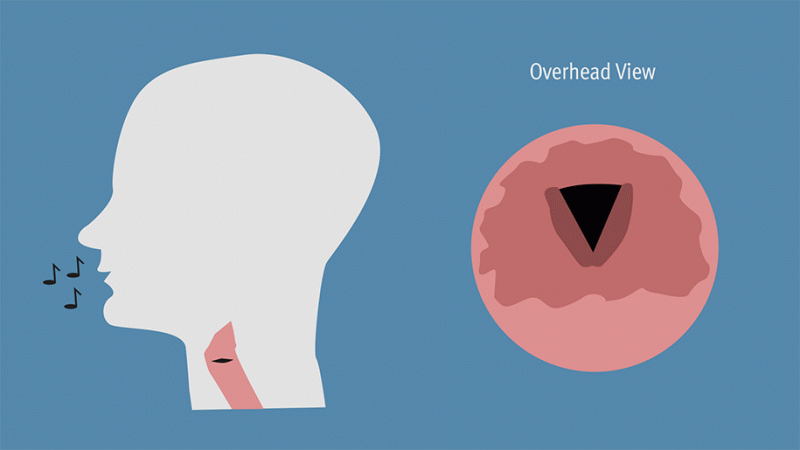Scientists grow functional vocal cord tissue in the lab

University of Wisconsin-Madison scientists have succeeded in growing functional vocal cord tissue in the laboratory, a major step toward restoring a voice to people who have lost their vocal cords to cancer surgery or other injuries.
Dr. Nathan Welham, a UW speech-language pathologist, and colleagues from several disciplines were able to bioengineer vocal cord tissue able to transmit sound, they reported in a study published today in the journal Science Translational Medicine.
About 20 million Americans suffer from voice impairments, and many have damage to the vocal cord mucosae, the specialized tissues that vibrate as air moves over them, giving rise to voice. While injections of collagen and other materials can help some in the short term, Welham says not much can be done for people who have had larger areas of their vocal cords damaged or removed.
"Voice is a pretty amazing thing, yet we don't give it much thought until something goes wrong," says Welham, an associate professor of surgery in the UW School of Medicine and Public Health. "Our vocal cords are made up of special tissue that has to be flexible enough to vibrate, yet strong enough to bang together hundreds of times per second. It's an exquisite system and a hard thing to replicate."
Welham and colleagues began with vocal cord tissue from a cadaver and four patients who had their larynxes removed but did not have cancer. They isolated, purified and grew the cells from the mucosa, then applied them to a 3-D collagen scaffold, similar to a system used to grow artificial skin in the laboratory.
In about two weeks, the cells grew together to form a tissue with a pliable but strong connective tissue beneath, and layered epithelial cells on top. Proteomic analysis showed the cells produced many of the same proteins as normal vocal cord cells. Physical testing showed that the epithelial cells had also begun to form an immature basement membrane, which helps create a barrier against pathogens and irritants in the airway.
Welham says the lab-grown tissue "felt like vocal cord tissue," and materials testing showed that it had qualities of viscosity and elasticity similar to normal tissue.
To see if it could transmit sound, the researchers transplanted the bioengineered tissue onto one side of larynges that had been removed from cadaver dogs. The larynges were attached to artificial windpipes and warm, humidified air was blown through them. Not only did the tissue produce sound, but high-speed digital imaging showed the engineered mucosa vibrating like the native tissue on the opposing side. Acoustic analysis also showed the two types of tissue had similar sound characteristics.
Finally, the researchers wanted to see if the tissue would be rejected or accepted by mice that had been engineered to have human immune systems. The tissue grew and was not rejected, performing equally well in mice that had the larynx-cell donor's immune system (created via a blood donation from the larynx-cell donors) and mice with different human immune systems.
"It seems like the engineered vocal cord tissue may be like cornea tissue in that it is immunoprivileged, meaning that it doesn't set off a host immune reaction," Welham says, adding that earlier studies had also suggested this.
In one way, the tissue was not as good as the real thing: Its fiber structure was less complex than adult vocal cords, but the authors said this was not surprising because human vocal cords continue to develop for at least 13 years after birth.
Welham says vocal cord tissue that is free of cancer is a rare commodity, so clinical applications will either require banking and expansion of human cells, or the use of stem cells derived from bone marrow or other tissues. Stem cells could be primed to differentiate into vocal cord cells by exposing them to vibration and tensile forces in a "laryngeal bioreactor." Such work is being pursued by other laboratories, including at Wisconsin.
Clinical applications are still years away, but Welham says this proof-of-principle study is a "robust benchmark" along the route to replacement vocal cord tissue. Moving this promising work forward requires more testing of safety and long-term function.
More information: "Bioengineered vocal fold mucosa for voice restoration," by C. Ling et al. Science Translational Medicine stm.sciencemag.org/lookup/doi/ … scitranslmed.aab4014


















